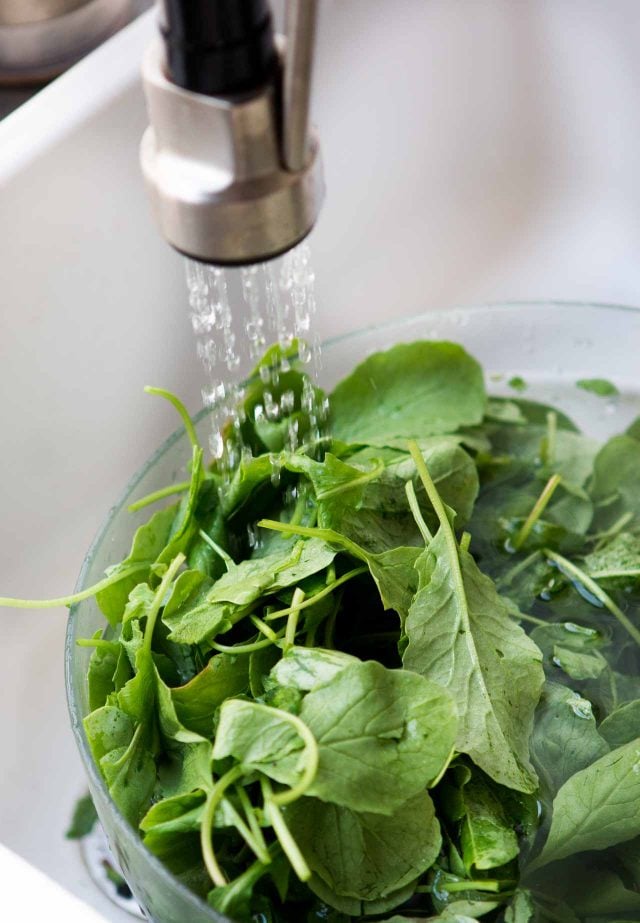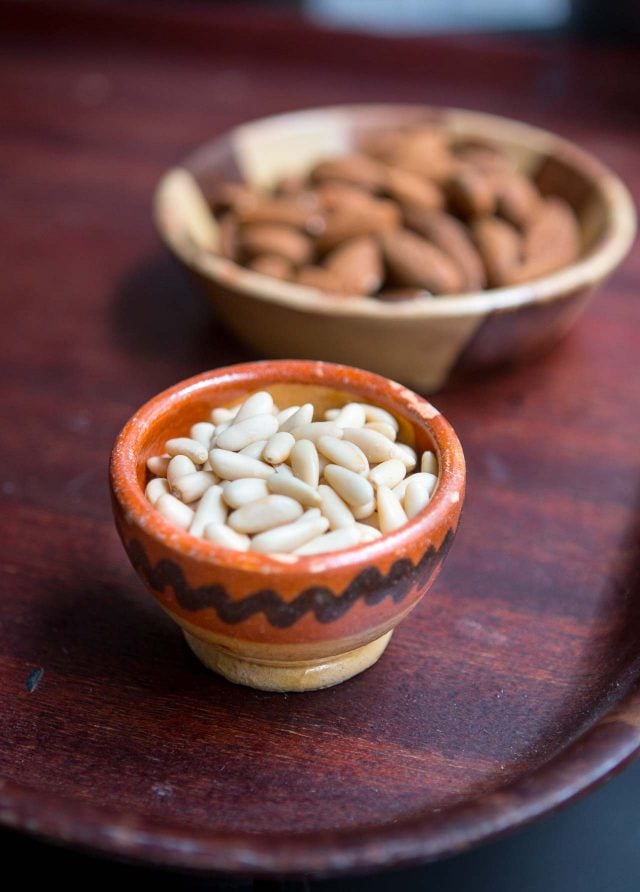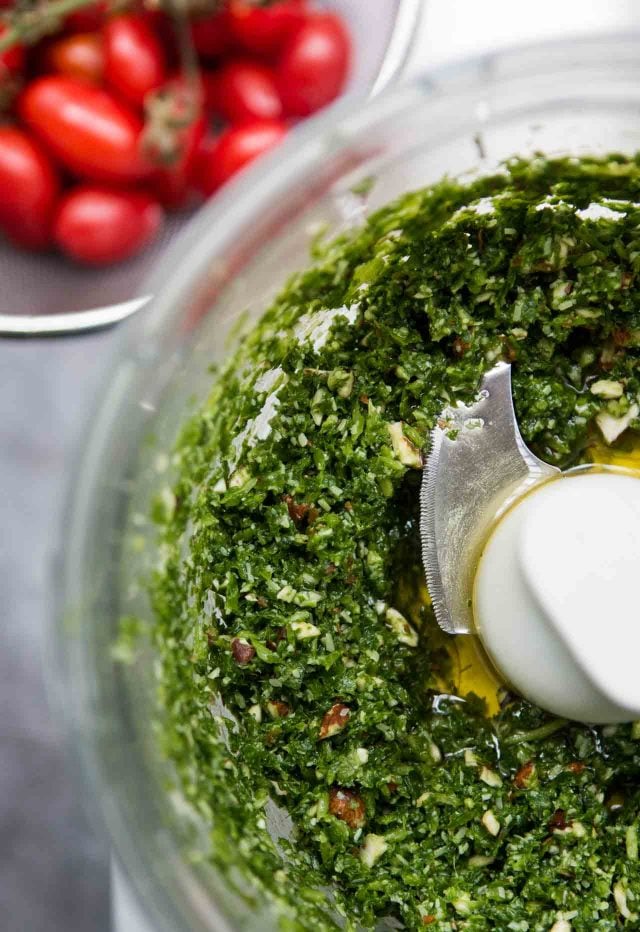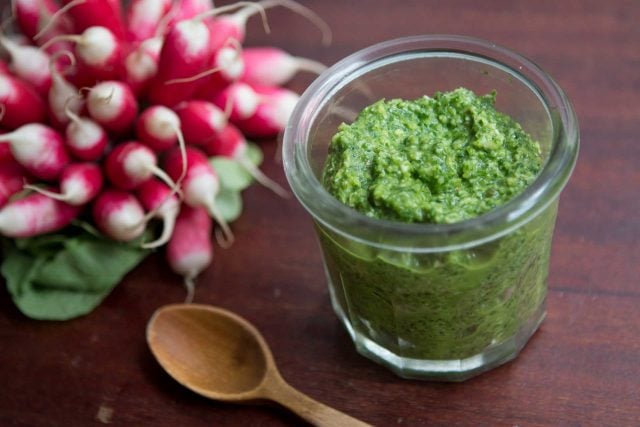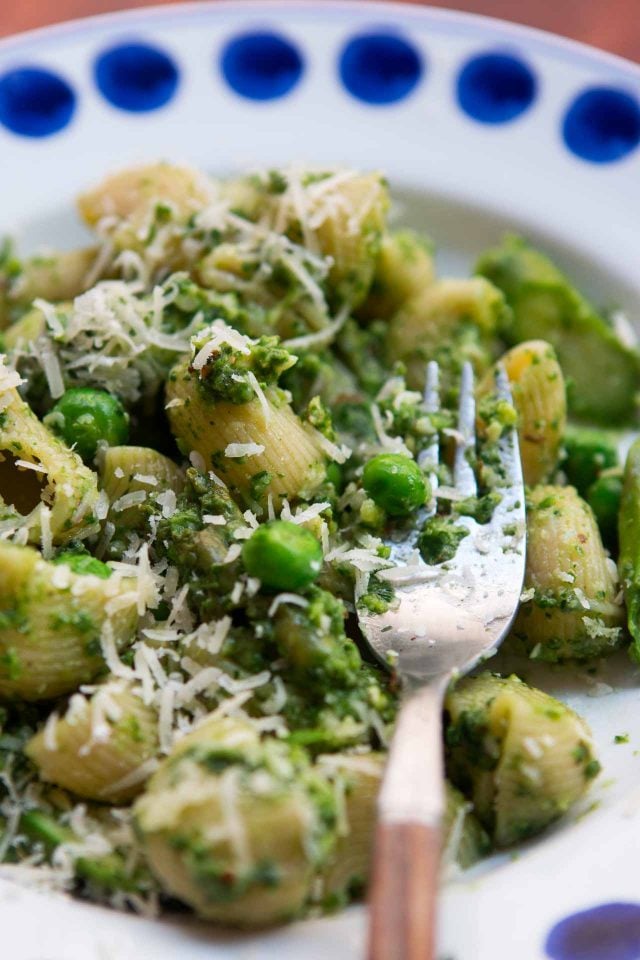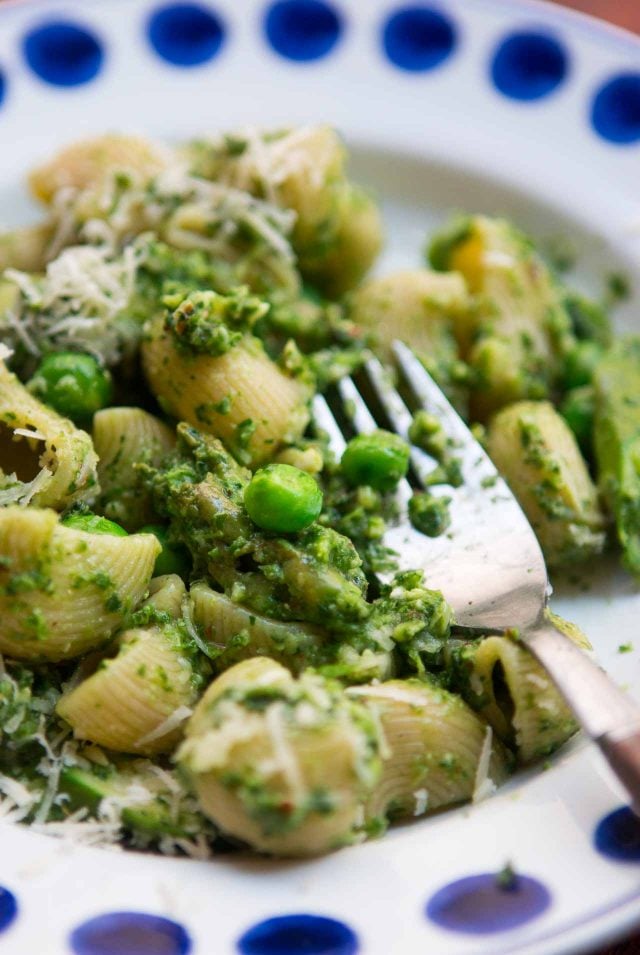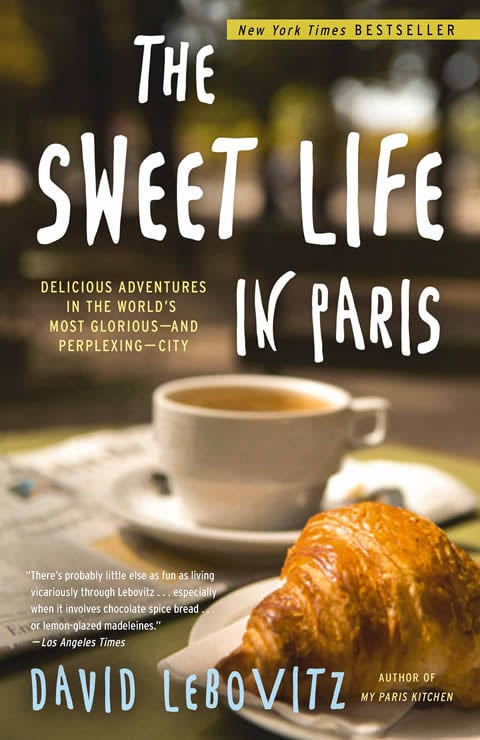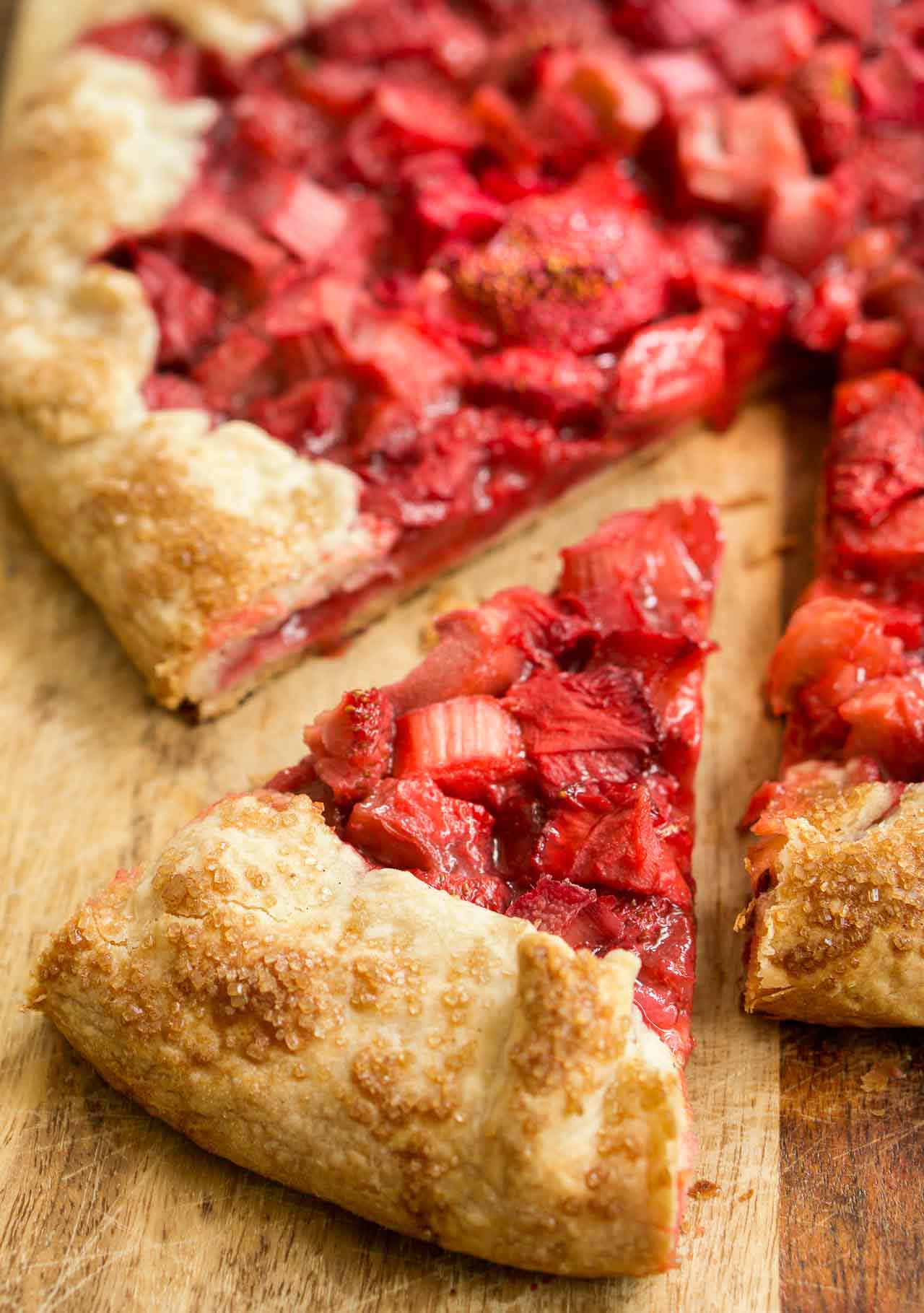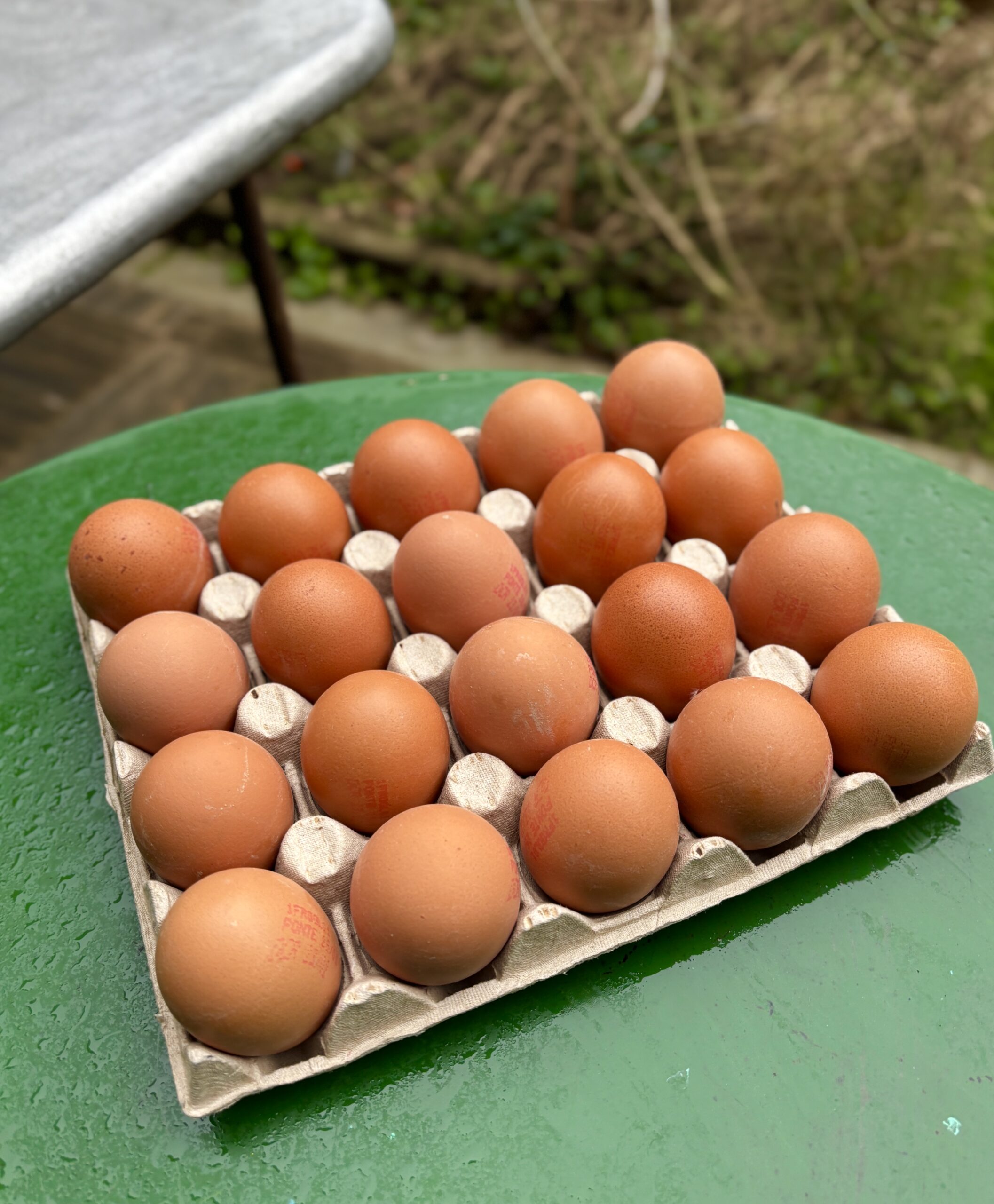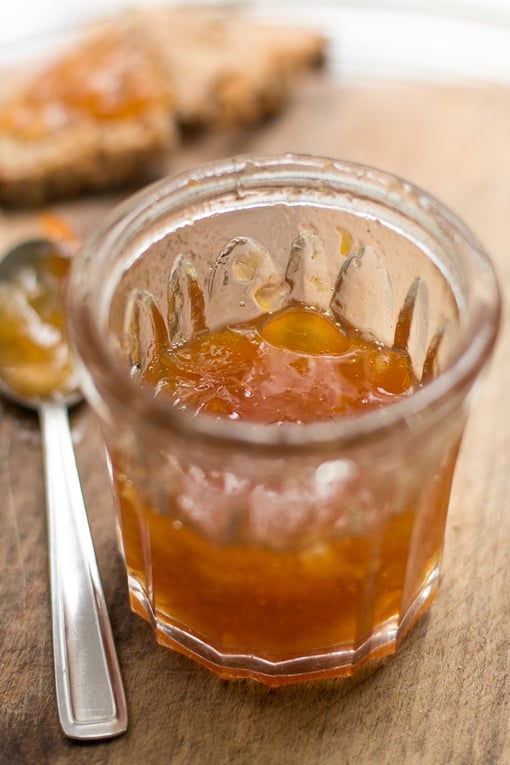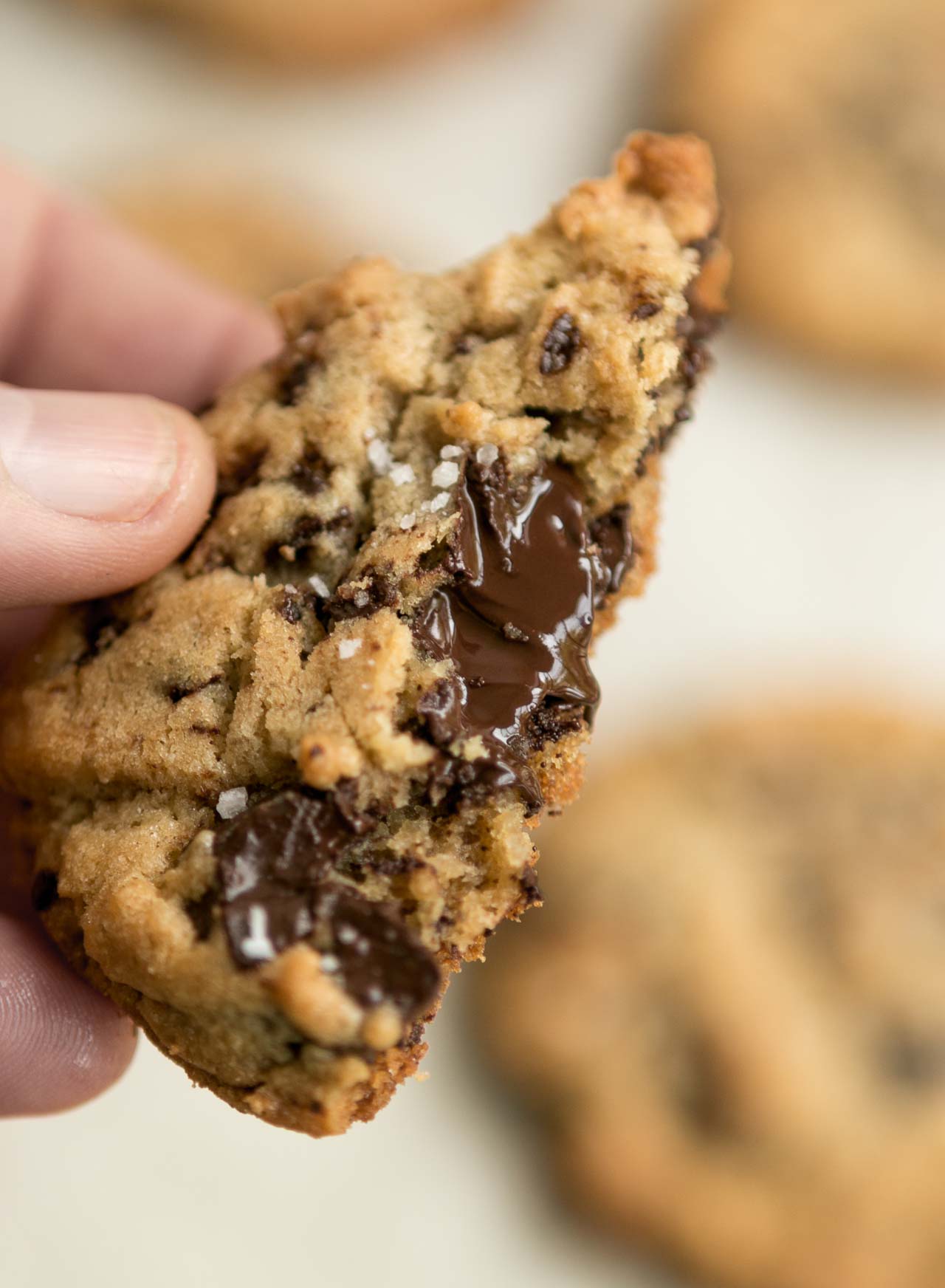Radish Leaf Pesto
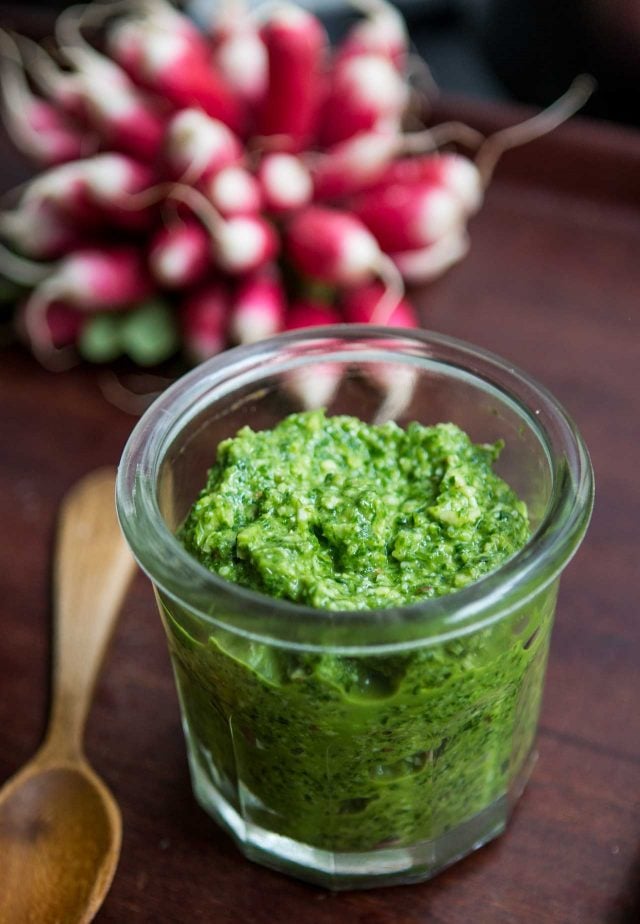
Last spring feels like quite a while ago, when I (and we) were all wondering about our food supplies running out, rediscovering things in our jumbled pantries and packed-to-the-gills freezers, and also being a lot more conscious of food waste. On the other hand, it’s hard to use everything up. But I did my best.
I’m the kind of person who finds a 1-inch (3cm) cube of pesto lurking in the back of the freezer, then goes out and spend time at the market shopping for the vegetables, then comes home to wash and chop them up, while the beans are soaking to make soupe au pistou. Then I realize I forgot to buy more basil because I only have a little cube of pesto (or more accurately, pistou) and it’s not enough, so I head back out to buy more basil, cooling my heels in line behind madame, who is requesting that the vendor show her each oignon and carotte for careful examination before she buys it. When all is said and done, and the soup has been served that evening, I find myself with a little bit of leftover pesto when all is said and done, which goes back into the freezer. And the cycle begins again.
It’s a noble cause to use everything you can. Every peach pit can be used to flavor ice cream or liqueur, every orange peel can be candied, and every radish leaf can be the soup du jour. Sometimes people tell me they freeze things like fruit slices, cakes, tarts, whey, bones, and what-have-you, and I’m insanely jealous of their copious freezer space. Mine is always packed. There were some brief moments during the lockdown where there was some space in mine, as I rifled through it to valiantly use things up. But now I can barely shut the door again.
Romain’s parents were very frugal and if you have older parents, or grandparents, they’re often especially frugal with food, attributing their thrift to the war…which ended in 1945, seventy-five years ago. I remember my grandmother didn’t ever want to throw anything away and once I decided to do something about it and went on a tear, cleaning out her kitchen cabinets, and she was reluctant to let me toss out the bulging cans of vegetables that were in the back, that still had the 21¢ price stickers on them, hand-stamped in purple ink, if you’re old enough to remember those.
I think about her, and Romain’s parents, every time I chop off and toss radish leaves, which are always sold attached to the radishes in France. I buy at least three bunches of radishes a week (we are both major radish-eaters) and I already have three or four full-time jobs, so can’t add ‘radish leaf-processor’ to my CV or resumé, but when the leaves are organic and I have the time, I do like to use them.
This pesto is so simple to make that you don’t have to worry about spending the afternoon making it, or cleaning up afterward. I use a food processor but you can use a blender instead. (Unlike basil leaves, radish leaves are quite firm so a mortar and pestle would require a lot more muscle.) Just add everything to the machine, and blitz away. Within a few minutes, you’ll have a beautiful jar of bright-green radish leaf pesto, which is great spread on crackers or toasts for an appetizer, or tossed with noodles and vegetables, like peas, broccoli, or green beans, for a vibrant bowl of pasta. But if you can’t use it right away, yes, it can be frozen…if you have the space.
Radish Leaf Pesto
- 8 cups (140g) loosely packed radish leaves, preferably organic (well-washed)
- 2-3 medium cloves of garlic, peeled and sliced
- 1/4 cup (60ml) extra-virgin olive oil, plus 1-2 tablespoons, or more, if necessary
- 1/2 cup (45g) grated Parmesan cheese
- 1/3 cup (30g) whole almonds, unroasted, coarsely chopped, or 3 tablespoons untoasted pine nuts (30g)
- 3/4 teaspoon salt
- Coarsely chop the radish leaves and put them in the bowl of a food processor along with the garlic, 1/4 cup of olive oil, Parmesan, almonds or pinenuts, and salt.
- Pulse the ingredients in the food processor, stopping to scrape down the sides, if necessary, until the ingredients come together in a cohesive paste. If needed, add 1 or 2 tablespoons or more olive oil, unless it's a smooth, moist paste.
